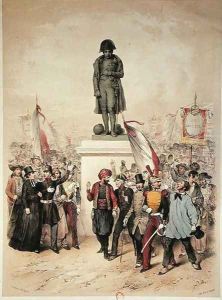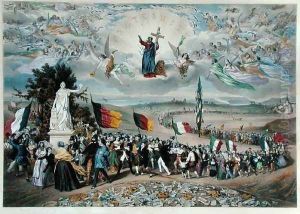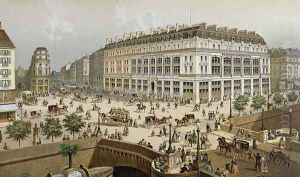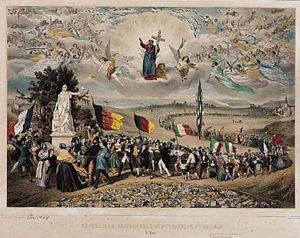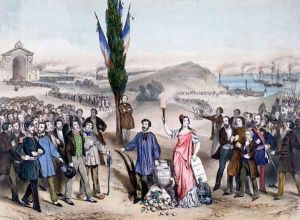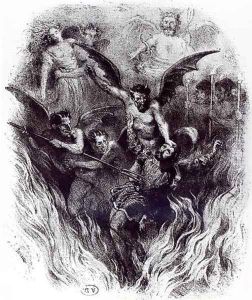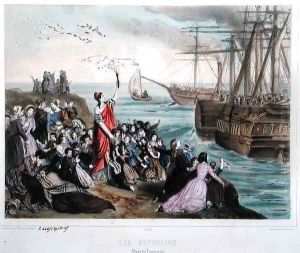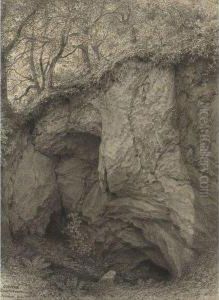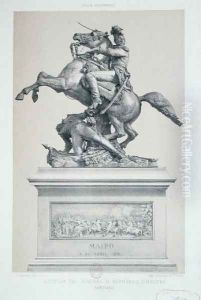Frederic Sorrieu Paintings
Frédéric Sorrieu was a French artist and printmaker, best known for his works that depicted democratic and utopian visions for the future of France and Europe. Born on November 23, 1807, in Paris, he grew up during a period of significant social and political transformation in France, which influenced his later artistic themes.
Sorrieu was trained as a lithographer and became adept in the medium, which was relatively new at the time and allowed for the mass production of images. His early works were primarily portraits and historical scenes, but he gained notoriety for his series of lithographs titled 'La République Universelle Démocratique et Sociale,' which means 'The Universal Democratic and Social Republic.' These works were created in the mid-19th century, a time when Europe was undergoing a series of revolutions and political upheavals. The most famous of these lithographs is 'Le Pacte,' which illustrates a utopian vision where the peoples of Europe and the Americas are united in peace and brotherhood, overseen by the spirit of France personified as a goddess-like figure.
Sorrieu's democratic and social ideals were not only expressed through his art but were also a reflection of the wider political movements of his time, such as the Revolutions of 1848. These revolutions spread across Europe and were driven by demands for democratic reforms, national independence, and social justice. Sorrieu's work was emblematic of the revolutionary spirit of the time, capturing the imagination of a public eager for change.
Despite the failure of the 1848 revolutions to bring about the widespread democratic changes that Sorrieu and many others had hoped for, his work continued to inspire those who dreamed of a more just and equal society. His vision of a unified Europe would resonate throughout the following centuries, as the continent slowly moved toward greater cooperation and integration.
Sorrieu died on December 24, 1887, in Paris. Although not as widely remembered today as some of his contemporaries, his work remains a significant historical artifact, reflecting the 19th-century aspirations for democracy and unity. His lithographs are preserved in various art institutions and serve as a visual testament to the ideals of his time.
